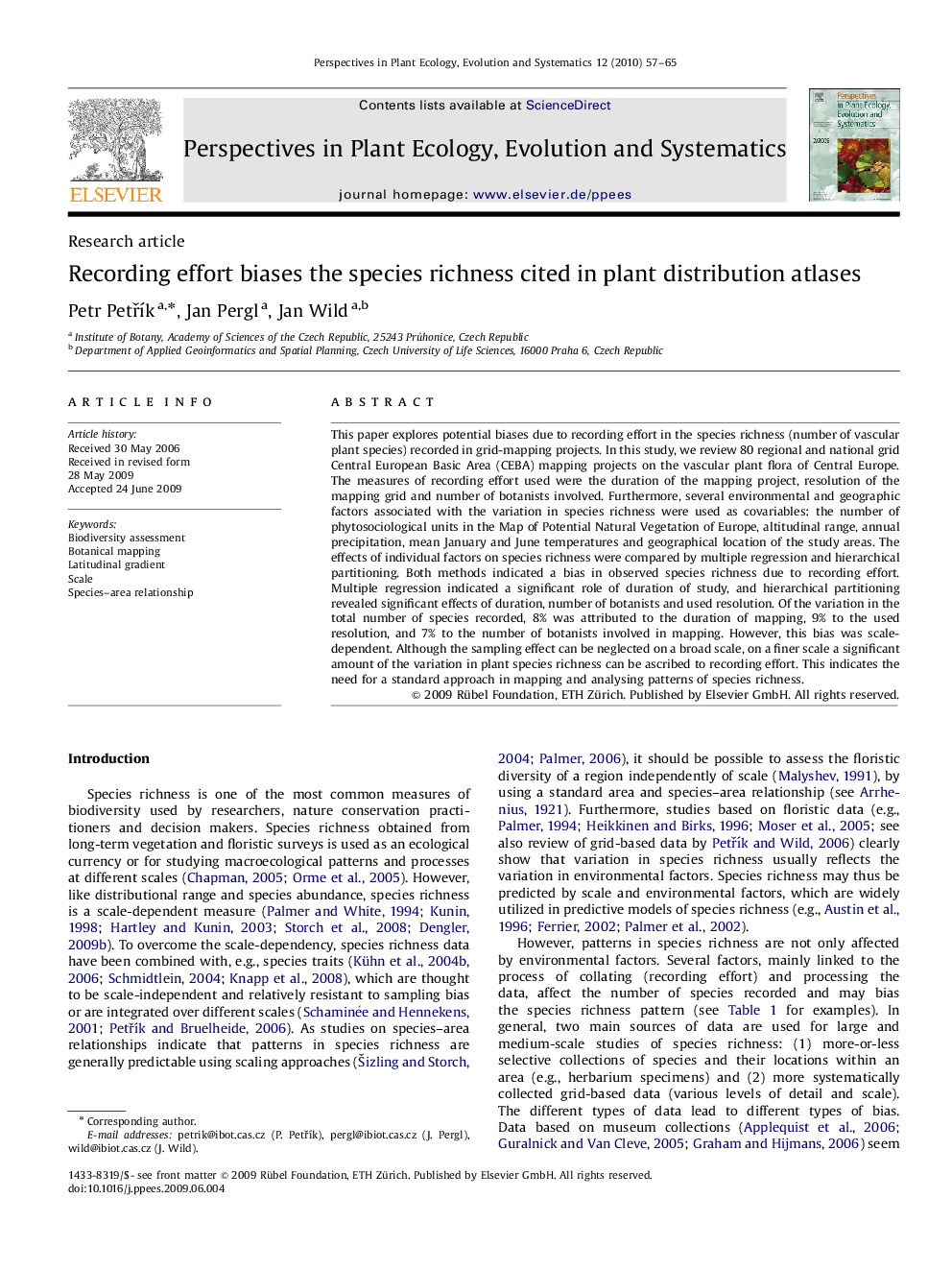| Article ID | Journal | Published Year | Pages | File Type |
|---|---|---|---|---|
| 4401252 | Perspectives in Plant Ecology, Evolution and Systematics | 2010 | 9 Pages |
This paper explores potential biases due to recording effort in the species richness (number of vascular plant species) recorded in grid-mapping projects. In this study, we review 80 regional and national grid Central European Basic Area (CEBA) mapping projects on the vascular plant flora of Central Europe. The measures of recording effort used were the duration of the mapping project, resolution of the mapping grid and number of botanists involved. Furthermore, several environmental and geographic factors associated with the variation in species richness were used as covariables: the number of phytosociological units in the Map of Potential Natural Vegetation of Europe, altitudinal range, annual precipitation, mean January and June temperatures and geographical location of the study areas. The effects of individual factors on species richness were compared by multiple regression and hierarchical partitioning. Both methods indicated a bias in observed species richness due to recording effort. Multiple regression indicated a significant role of duration of study, and hierarchical partitioning revealed significant effects of duration, number of botanists and used resolution. Of the variation in the total number of species recorded, 8% was attributed to the duration of mapping, 9% to the used resolution, and 7% to the number of botanists involved in mapping. However, this bias was scale-dependent. Although the sampling effect can be neglected on a broad scale, on a finer scale a significant amount of the variation in plant species richness can be ascribed to recording effort. This indicates the need for a standard approach in mapping and analysing patterns of species richness.
